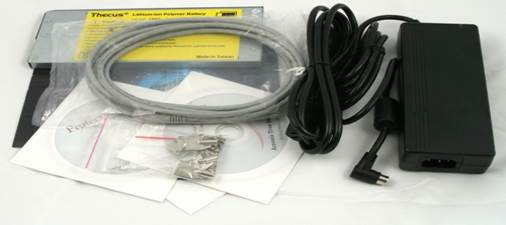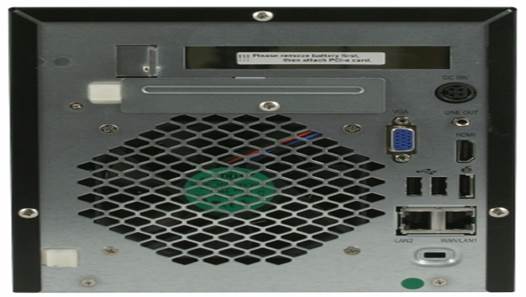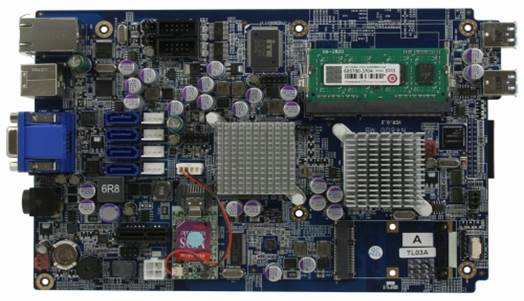We are going to talk about Thecus
N4200PRO’s successor – The Thecus N4800, which based on the Intel Atom 2.13GHz
(Dual-Core). This NAS device is used for small and medium businesses that need
centralized storage and quick response to multi-user environment.
The Thecus N2800 network attached storage
device which we tested recently has an elder cousin. This N4800 is designed for
4 disks and has two added features. Firstly, it is equipped with a backup
battery system helping to protect data in case of power failure. Secondly, it
has a PCle and miniPCle slot in standard size, can be used for adding network
interfaces.

Thecus
N4800 NAS
Other specifications stay the same: Intel
Atom D2700 processor supports for executing 4 tasks at the same time, 2 gigabytes
of system memory, DOM with firmware, USB 3.0 with eSATA port and an HDMI
output. The four-disk system also characterized a series of dots with the
control panel in the front side. You can use it to control and adjust some
parameters of the device.
Package and accessories

N4800’s
case
Although N4800 has a large case, its power
cord is external. We don’t think that PSU’s full 120 watts can be used entirely
whatever disk configuration you use.

Accessories
The case also contains the Ethernet cable,
mains cord, HDD fasteners, keys for HDD slots, user manual, battery and
software (include Acronis True Image Professional 2010). The full version of
the user manual is available in electronic format with over 160 pages.
Exterior design
N4800 likes its N4200 predecessor. The
producer didn’t care much about the design, but it looks generally fine anyway.
Its case is about 17x25x20 cm. The front panel is plastic. The rest of the case
is metal. Its color is conservative but the multi-colored indicators in the
left of the front panel brighten the black case.

N4800’s
black case
The dot-matrix display accompanied with 4
buttons, so it is quite convenience to use. In this way, accessing will be
password-protected.

N4800’s
back side
There is a Power button in the bottom left.
Shutting down the NAS storage device need to have additional confirmation
through the display, which is good. There are also arguments whether to put
high-speed USB 3.0 ports on the front or back of the panel, but N4800 has two
in its front. The disk slot is covered with a metallic mesh door. It is the
only vent for HDDs.
In the back, we can see expansion card and
battery slot, a 90mm fan grid, power connector, VGA and HDMI output, two USB
2.0 ports, an eSATA connector and two Gigabit Ethernet ports.
Hardware configuration
Thecus N4800 is based on an Intel Atom D270
processor which has two cords locked at 2.13 GHz and supports for executing
four functions at the same time. The OS is 64 bit. Hardware controller is integrated
with ICH10 chipset, responsible for USB 2.0 interface meanwhile two front USB
3.0 are based on the NEC controller. Thecus N2800 has two S-DIMM slots for
system memory, one of them is used for DDR3 2 GB module. Thus, you can easily upgrade
its memory subsystem if you want to.

Internal
configuration of hardware
DOM goes with a 1GB capacity program and is
connected via SATA. Ethernet controller operation based on Intl 82574L chips.
Realtek ALC262 is responsible for the audio. The full height of Pcle slot is x1
but you can install expansion cards. There is also a miniPCle, although it’s
not popular for NAS storage device.
The interior is not really neat because
there are too many cables inside. HDDs are connected via dedicated connectors
instead of a backplane. The ADDA fan uses 3-pin connector. Its speed is
adjusted automatically. You can also attach a second fan connector on the
printed circuit board.
The Video outputs and USB allow you to use
the NAS storage device as a desktop PC. For example, you can enter its BIOS,
change settings and install different OS.